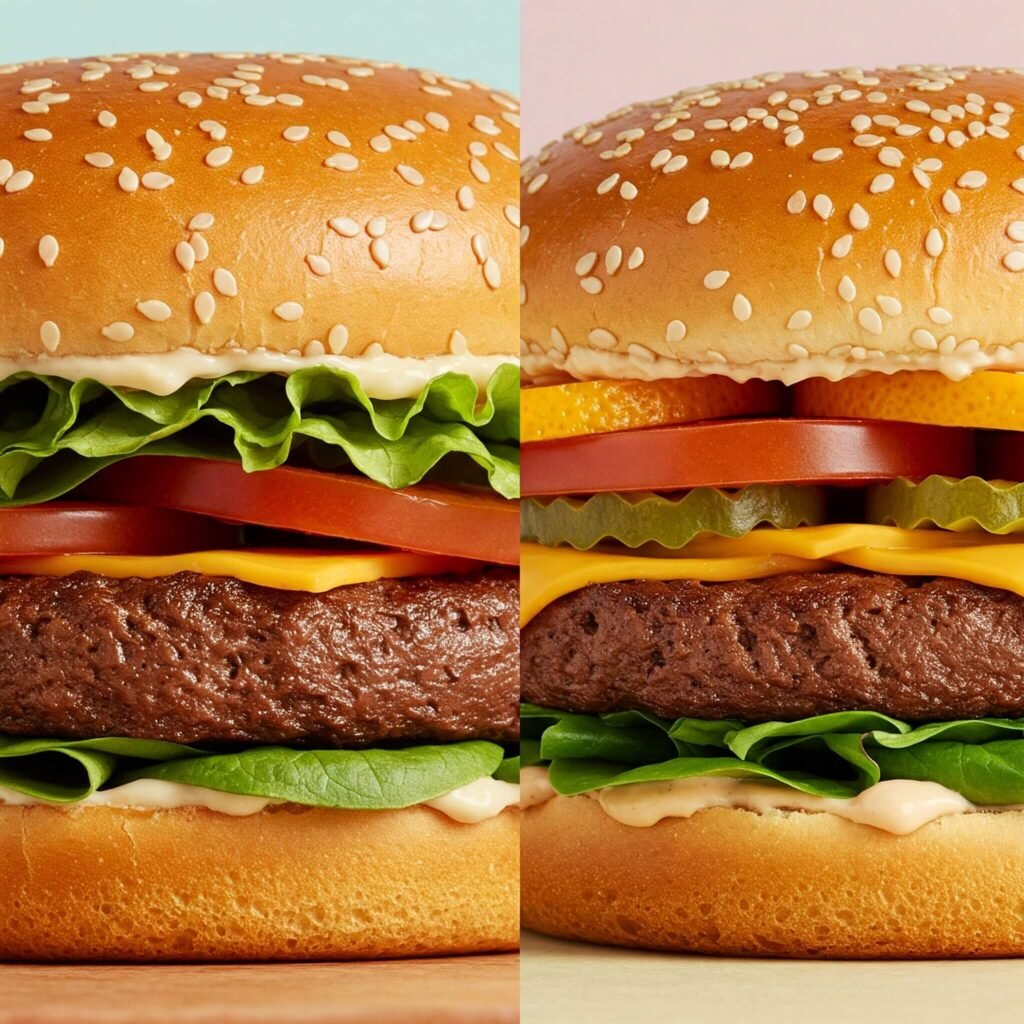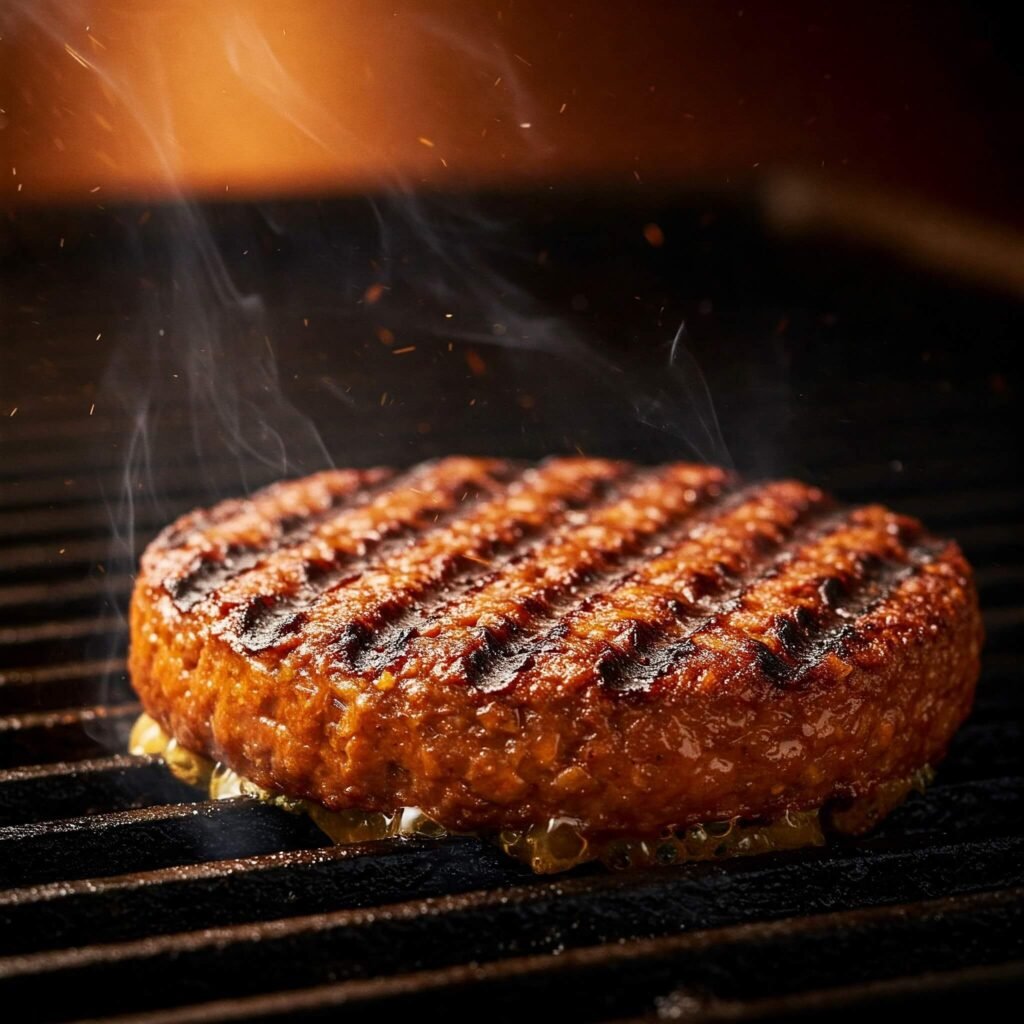Plant-based burgers have taken the food world by storm, and two brands dominate the scene: Beyond Meat and Impossible Foods. If you’re wondering which plant-based burger tastes better, this article dives deep into the Beyond Meat vs Impossible Foods debate, comparing flavor, texture, nutrition, and more. Whether you’re a vegan, flexitarian, or just curious, we’ll help you decide which burger deserves a spot on your plate.
Why the Beyond Meat vs Impossible Foods Debate Matters
The rise of plant-based diets has fueled demand for meat alternatives, with Beyond Meat and Impossible Foods leading the charge. These brands promise burgers that mimic the taste and texture of beef while being kinder to the planet. But which one delivers the best plant-based burger experience? Let’s break it down.

Taste Test: Beyond Meat vs Impossible Foods
When it comes to the Beyond Meat vs Impossible Foods taste test, personal preference plays a big role. Here’s how they stack up:
Beyond Meat: Bold and Beefy
Beyond Meat’s burger boasts a savory, slightly smoky flavor that mimics grilled beef. Its plant-based patty, made from pea protein, delivers a satisfying umami kick. Testers often praise its:
- Robust, meaty taste.
- Slightly charred, backyard BBQ vibe.
- Versatility in recipes, from burgers to tacos.
However, some find it has a subtle “plant-like” aftertaste, which may not appeal to everyone.
Impossible Foods: Juicy and Savory
Impossible Foods uses heme, a molecule that gives its burger a “bleeding” effect and a rich, beef-like flavor. Made from soy protein, it’s often described as:
- Juicier and closer to real beef.
- Slightly sweeter with a robust, iron-rich taste.
- Ideal for burger purists craving a classic fast-food experience.
Some testers note a slightly processed flavor, which can stand out in simpler preparations.
Takeaway: Beyond Meat leans toward a smoky, grilled profile, while Impossible Foods feels juicier and more beef-like. Try both to see which suits your taste buds!
Outbound Link: Bon Appétit’s taste test of plant-based burgers for more insights.
Texture and Cooking Experience
Texture is critical in the Beyond Meat vs Impossible Foods showdown. A great plant-based burger should hold up on the grill and feel satisfying to bite into.
Beyond Meat: Firm and Meaty
Beyond Meat’s patty has a coarse, fibrous texture that mimics ground beef. It:
- Holds its shape well during cooking.
- Offers a chewy, substantial bite.
- Works great for grilling or pan-frying.
Some users report it can dry out if overcooked, so keep an eye on the heat.
Impossible Foods: Soft and Juicy
Impossible Foods excels in creating a tender, juicy texture that feels indulgent. It:
- Mimics the crumble of a medium-rare beef patty.
- Cooks quickly and retains moisture.
- Performs best in a skillet or on a flat-top grill.
However, it can feel slightly mushy if not cooked with a good sear.
Takeaway: Beyond Meat offers a firmer, chewier texture, while Impossible Foods nails the juicy, tender bite.

Nutrition: Which Plant-Based Burger Is Healthier?
Health-conscious eaters often compare Beyond Meat vs Impossible Foods for nutritional value. Here’s a quick breakdown based on their standard patties (4 oz):
| Nutrient | Beyond Meat | Impossible Foods |
|---|---|---|
| Calories | 230 | 240 |
| Protein | 20g | 19g |
| Fat | 14g (5g sat) | 14g (8g sat) |
| Sodium | 390mg | 370mg |
| Key Ingredient | Pea protein | Soy protein, heme |
Beyond Meat: Lower in Saturated Fat
Beyond Meat’s burger is slightly lower in saturated fat and sodium, making it a better pick for heart-conscious diets. However, it contains coconut oil, which some avoid due to its high saturated fat content.
Impossible Foods: Higher in Iron
Impossible Foods’ heme boosts iron content, which is great for plant-based eaters who need this nutrient. However, its higher saturated fat content may be a drawback for some.
Takeaway: Both are comparable, but Beyond Meat edges out for lower saturated fat, while Impossible Foods wins for iron. Check your dietary needs before choosing.
Outbound Link: Healthline’s guide to plant-based meat nutrition for a deeper dive.
Sustainability: Which Brand Is Greener?
Both brands champion sustainability, but their approaches differ in the Beyond Meat vs Impossible Foods eco-battle.
- Beyond Meat: Uses pea protein, which requires less water and land than soy. Their packaging is recyclable, and they emphasize carbon-neutral goals.
- Impossible Foods: Soy is more resource-intensive, but their heme production is designed to reduce environmental impact compared to beef. They’re working toward net-zero emissions.
Takeaway: Both are far greener than beef, but Beyond Meat has a slight edge due to its pea protein base.

Price and Availability
In the Beyond Meat vs Impossible Foods price war, both are widely available but vary in cost:
- Beyond Meat: Typically $5-7 for a 2-pack (8 oz). Found in most grocery stores like Walmart and Target.
- Impossible Foods: Around $6-8 for a 12 oz pack. Common in supermarkets and restaurants like Burger King.
Takeaway: Impossible Foods offers slightly better value per ounce, but check local prices for the best deal.
Which Plant-Based Burger Should You Choose?
The Beyond Meat vs Impossible Foods debate comes down to your priorities:
- Choose Beyond Meat if you love a smoky, firm burger with lower saturated fat and a greener footprint.
- Choose Impossible Foods if you crave a juicy, beef-like patty with a rich, iron-packed bite.
Ultimately, both are delicious plant-based burgers that outshine traditional meat in sustainability. Head to your local grocery store, grab both, and host your own taste test!
Outbound Link: Epicurious’ guide to cooking plant-based burgers for pro tips.




















































